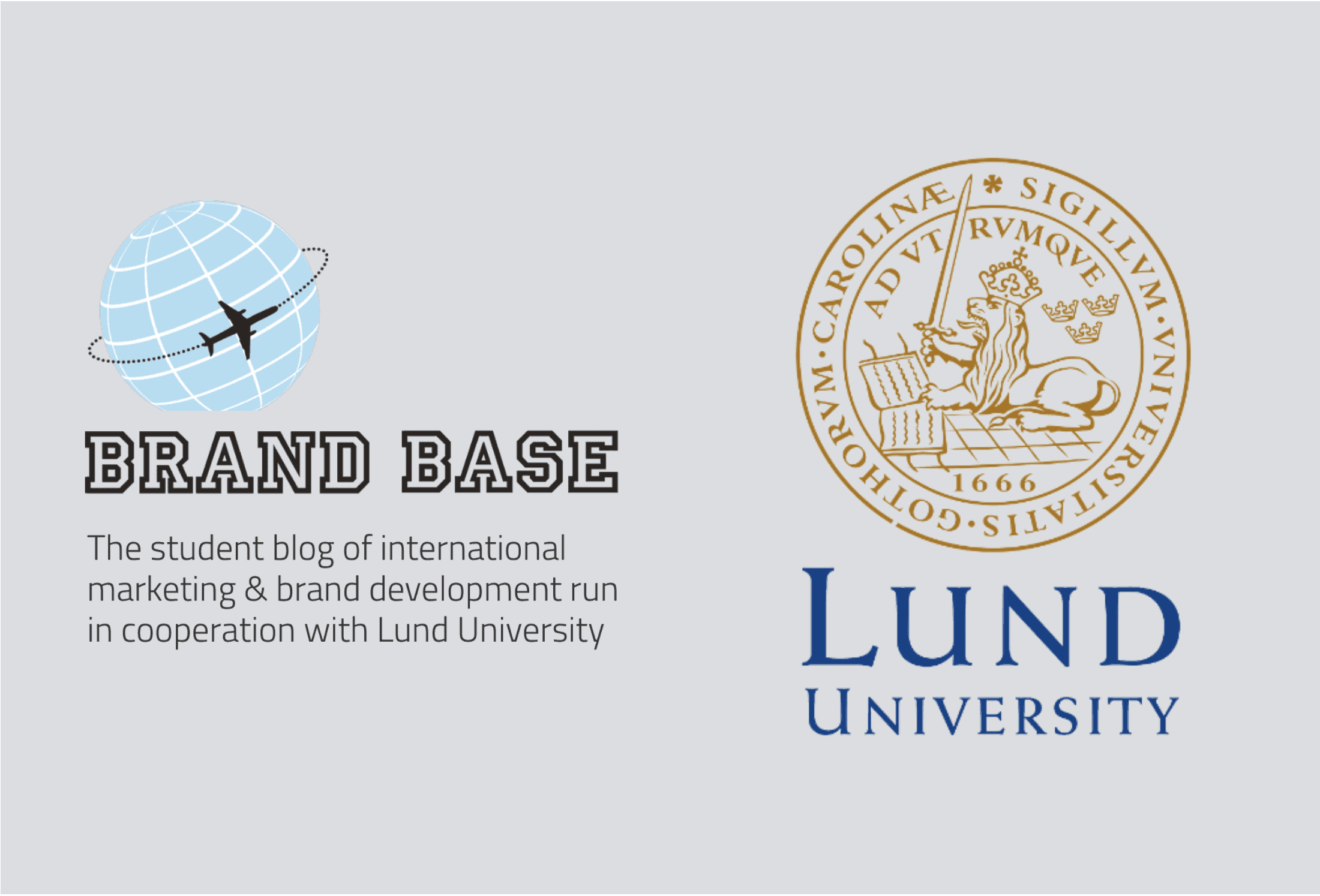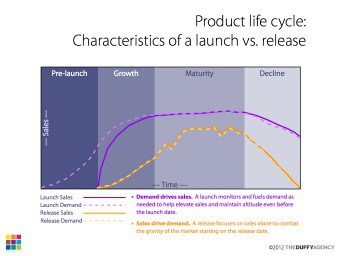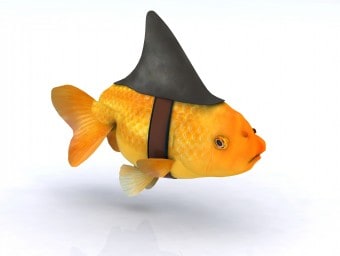I don’t always do memes, but when I do, it becomes marketing success
A case of Dos Equis and memes in marketing...
16 May 2024 24986 ViewsWritten by Lucas Fenn
Today’s Web 2.0 – opportunity for memes in marketing
The modern marketing environment is currently experiencing a lot of changes due to the social evolution of the internet and new media (Van Dijk, 2012). Ever since the emergence of our current “Web 2.0” era the tables have turned from marketing managers having full creative control of their brand, to consumers having more power to create, and recreate, content online. This is commonly referred to as User Generated Content (UGC) (Christodoulides et al., 2012). It is part of a communication paradigm shifting into a more participatory culture. Among other ways to share content online, such as Instagram Images, Tweets, Blogs and Vlogs etc. one particular type has in the last ten years taken the internet by storm, Memes (Sharma, 2018).
The Meme
A meme can essentially be described as an idea or habit which is shared between people through imitation. In common language the internet meme has become synonymous with the meme ever since its enormous online popularity (Sharma, 2018). However, there is a difference in modern-day memes, or internet memes, and how they originally where defined.
The concept of a meme was originally coined by Richard Dawkins (1976 cited in Knobel, 2006) in his 1976 book “The Selfish Gene”. Here, Dawkins defines the meme as a biological function of evolution. It is described as a behavior or idea which, because of its popularity and common likability, is shared and imitated within cultures and, in turn, increases the chance of evolutionary survival.
Memes in marketing
The trend factor in marketing memes
One of the most efficient ways of communicating with customers in marketing is through humor. Furthermore, the most prevalent medium used on the internet, and in social media, for humorous purposes is the internet meme ( Taecharungroj & Nueangjamnong, 2015). Memes are seen as relatable pieces of life, a sort of observational comedy if you will, which are able to resonate to a larger population. This is partly because they are often comedic commentary on relatable societal subjects. The essence of trends is therefore such an important factor to memes (Sharma, 2018).
Because of the participatory nature of UGC’s like memes, they belong in a vast network of relational structures that tend to amplify trends. This is what Van Dijk (2012) referrers to as ”The Law of Trend Amplification” . Further, this resonates with the fact that the hierarchical relationship between consumers and marketers has become more horizontal. However, it does not mean that marketers are completely incapacitated. In fact, it could be seen as a case of the opposite. Social media users sharing trends through memes gives marketing managers a golden chance to join the fun by adapting this medium in their marketing strategy and advertising campaigns (Bruce & Solomon, 2013).
Marketing Meme: More than “Viral Trend”
Discussions on the topic “Viral Trends” tend to mainly focus on the extent to which the trend is spread, leaving out important sociocultural aspects as well as human agency (Burgess, 2008; Jenkins et al., 2007; Knobel, 2006). There is a difference between a viral video and an internet meme, or memetic video. Shifman (2012) explains that, while a viral video, like Susan Boyle’s Britain’s Got Talent audition, can become an online trend, it cannot be creatively shared in the same way as a meme.
A meme, on the other hand, gives way for a more participatory form of creative user involvement, making it an even more engaging internet phenomenon. This is commonly referred to as “remixing” memes. According to Shifman (2012) there are some common characteristics that make memes more regeneratable. These are; including ordinary people, humor, simplicity and repetitiveness.
The attention factor
Memes have the potential of being important mediums in so called real time or moment marketing. This is a Social Media Marketing phenomenon focused on reaching consumers directly with the right content, on the right platform, with good timing. The marketing objective is to maximize opportunity for consumer engagement with the brand (sharma, 2018). However, in the “Web 2.0” era, attention is a vital factor to take into account. The growing amount of produced online content leads to less time for people to process all the information (Van Dijk, 2012).
Consequently, the internet has become a highly completive landscape where actors need to adapt in order to gain the attention of users (Van Dijk, 2012). Therefore, marketers need to find a branding strategy where advertisements are concise enough to fit into the users short attention span, while entertaining enough to catch the viewers’ attention in the first place (Sharma, 2018). Luckily though, memes are already concise and entertaining by nature, arguably making them efficient mediums for online marketing.
Create new or ride the wave of existing memes in marketing?
Create new memes for marketing
Experts in the field of marketing agree that there is a strong potential for memes to build brand affinity through social media (Sharma, 2018). According to Holt and Cemaron (2010) the usage of popular memes is essential in forming a cultural strategy for your brand. However, an important question remains; should companies create their own meme or ride on the wave of an already popular one?
Considering that the success of a meme is entirely up to the interpretation of consumers, there is a high risk involved in creating your own. To avoid a potential PR disaster demands extensive consumer research and brand consistency. This is due to the fact that the content needs to match the already established brand image (Sharma, 2018). Although there are successful cases of brands creating memes from scratch, there certainly is a dimension of high-risk high-reward attached to such an attempt. The risk is higher because the company is unaware of the memes future popularity. However, the reward is arguably greater because an original meme could lead to larger brand awareness and brand association.
Ride the wave
On the other side of the spectrum is the opportunity to incorporate existing memes to your brand. A brand cannot decide what goes viral. This makes the “remixing” of memes a less risky move and arguably a more strategic marketing plan. Although the chance of virality increases, there is still a risk of using a meme that does not resonate well with the brand’s existing customers. It is, yet again, a question of how well the content matches the brand’s personality (Sharma, 2018). Additionally, a brand imitating existing memes runs a risk of being perceived as “trying too hard to fit in”.
Case: Dos Equis and The Most Interesting Man in the World
Whether it is about creating your own meme or using an existing one, it is important for brands to engage with the trend in a natural way (sharma, 2018). This is certainly what the beer company Dos Equis did in their highly successful campaign “The Most Interesting Man in the World”. Originally a TV ad created by the marketing firm Euro RSCG Worldwide, this campaign was first introduced to the United States in 2006. The commercials, with the protagonist played by Jonathan Goldsmith, initially used catchphrases like “I don’t always drink beer, but when I do I prefer Dos Equis”, and “Stay thirsty my friends”. Playing on a humoristic narrative where the main character is inhumanly awesome, this campaign quickly gained publicity with a large following. (Know Your Memes, 2010).
Subsequently, this enormous success resulted in the creation of various meme generator pages allowing a huge online community to create their own comedic captions, and thus, the meme hysteria began. (Know Your Memes, 2010)
What can marketers learn from Dos Equis?
What made this specific campaign turn into one of the most popular memes of all time (medium.com, 2016)? Besides the successful absurdist humor attached to the idea of the narrative, its memetic success lies in the phrasing of the slogan, later becoming the meme’s template, “I don’t always X, but when I do, I Y”. Remember the characteristics of memes stated above by Shifman (2012) ? Knowing this, Dos Equis’ commercial can be seen as possessing all those characteristics. Whether this was intentional or not from Dos Equis part, it is ingenious nonetheless.
With a constant increase from 2007, this easy-to-use template has generated over 1.3 million remixes (Ryerson, 2016). It is precisely this sort of UGC that profoundly increases consumer awareness and brand loyalty. The result was a total sales growth of 34.8 % from the start in 2007, to the end of the campaign in 2016 (Malcolm, 2016).
Tips to marketers
To summarize, whether you are looking to incorporate existing memes or create new ones, it demands a marketing strategy with thorough analysis of your brand’s perceived image, its values and a compatibility to the products or services your brand provides. To make things easier, perhaps Shifman’s (2012) definition of key meme factors might come in handy when crafting a remixable meme. This will certainly increase your chances of virality when using memes in marketing.
References:
Bruce, M. & Solomon, M. R. 2013. ‘Managing for media anarchy: A corporate marketing perspective’, Journal of Marketing Theory & Practice, Vol. 21 No.3, pp. 307–18. Available Online:http://eds.a.ebscohost.com.ludwig.lub.lu.se/eds/pdfviewer/pdfviewer?vid=8&sid=268d6c97-0a6d-4d65-bc87-ad4c6bc4ebee%40sdc-v-sessmgr05 [Accessed 26 November 2018]
Burgess, J. 2008. ‘All your chocolate rain are belong to us? Viral video, YouTube and the dynamics of participatory culture’, in Video Vortex Reader: Responses to YouTube, Amsterdam: Institute of Network Cultures, pp. 101–09. Available Online: https://eprints.qut.edu.au/18431/1/18431.pdf[Accessed 26 November 2018]
Christodoulides, G., Jevons, C. & Bonhomme, J. 2012. Memo to Marketers: Quantitative Evidence for Change. How User-Generated Content Really Affects Brands. 2012. Journal of Advertising Research. Vol. 52, No. 1, pp.53-64. Available Online: http://eds.b.ebscohost.com/eds/pdfviewer/pdfviewer?vid=2&sid=47db39a5-599e-4816-ac96-3a9cf0a28da4%40pdc-v-sessmgr02 [Accessed 22 November 2018]
Holt, D. & Cameron, D. 2010. Cultural Strategy: Using Innovative Ideologies to Build Brands, New York: Oxford University Press. Available Online:https://books.google.se/books?hl=en&lr=&id=CDgtbanRLT8C&oi=fnd&pg=PR7&dq=+Cultural+Strategy:+Using+Innovative+Ideologies+to+Build+Brands&ots=7N4NRAYPsP&sig=5EqP6TwIE8TkNXEtDT208wrm5nQ&redir_esc=y#v=onepage&q=memes&f=false [Accessed 25 November 2018]
Jenkins, H., Purushotma, R., Weigel, M., Clinton, K. & Robison, A. J. 2007. Confronting the Challenges of Participatory Culture: Media Education for the 21st Century, Chicago, IL: The John D. and Catherine T. MacArthur Foundation. Available Online:http://eds.b.ebscohost.com/eds/results?vid=1&sid=8a8cae67-eaaf-4b2e-9869-6cac7a8973d0%40pdc-v-sessmgr01&bquery=(Confronting+AND+the+AND+Challenges+AND+%22of%22+AND+Participatory+AND+Culture%3a+AND+Media+AND+Education+AND+for+AND+the+AND+21st+AND+Century)&bdata=JmNsaTA9RlQxJmNsdjA9WSZ0eXBlPTAmc2l0ZT1lZHMtbGl2ZSZzY29wZT1zaXRl[Accessed 25 November 2018]
Knobel, M. 2006. Memes and Affinity Spaces: Some Implications for Policy and Digital Divides in Education. E-Learning, Vol. 3, No.3, p 411-427. Available Online: http://eds.a.ebscohost.com/eds/detail/detail?vid=2&sid=93e3323b-7fb3-462b-b528-8695b9eb62ce%40sessionmgr4006&bdata=JnNpdGU9ZWRzLWxpdmUmc2NvcGU9c2l0ZQ%3d%3d#AN=EJ873441&db=eric [Accessed 25 November 2018]
Know your memes. 2010. The Most Interesting Man in the World. Part of a Series on Advice Animals. Available Online: https://knowyourmeme.com/memes/the-most-interesting-man-in-the-world#fn16 [Accessed 24 November 218]
Malcolm, H. USA Today Published: Mar 9, 2016 Available Online: https://eu.usatoday.com/story/money/2016/03/09/dos-equis-most-interesting-man-in-the-world-retiring/81432356/ [Accessed 25 November 2018]
Ryerson, U. A Medium Corporation, 2016 Available Online: https://medium.com/@ru_rkya/the-most-interesting-man-in-the-world-5fc6cbfb1fbb [Accessed 25 November 2018]
Sharma, H. 2018. Memes in digital culture and their role in marketing and communication: A study in India. Studies in Communication & Culture. Vol. 9, No. 3, p 303-318. Available Online: http://eds.b.ebscohost.com/eds/pdfviewer/pdfviewer?vid=1&sid=fd6aa709-a01e-4289-b30d-5f7ae48071ca%40sessionmgr120 [Accessed 22 November 2018]
Shifman, L., 2012. An anatomy of a YouTube meme. new media & society, Vol. 14, No. 2, pp.187-203. Publisher: Sage Publications LTD. Available Online: https://journals.sagepub.com/doi/10.1177/1461444811412160 [Accessed 23 November 2018]
Taecharungroj, V. & Nueangjamnong, P. 2015. Humour 2.0: Styles and Types of Humour and Virality of Memes on Facebook. Journal of Creative Communications, Vol. 10, No.3, p 288-302 Available Online: https://journals-sagepub-com.ludwig.lub.lu.se/doi/10.1177/0973258615614420 [Accessed 23 November 2018]
Van Dijd, J., 2012. Van Dijk, J., 2012. The network society. 3rd Ed. Sage Publications. London.
Figures
Figure 1/Title image: Meme example https://imgflip.com/memegenerator/14087310/Dos-Equis-Guy-Awesome
Figure 2: TV ad “Dos Equis Most Interesting Man in the World Plays Handball”
https://www.youtube.com/watch?v=n5HX7y1yDi4
Like this post? You'll find more marketing insights in my new book: International Brand Strategy: A guide to achieving global brand growth, now available from booksellers globally. Order your copy here.







